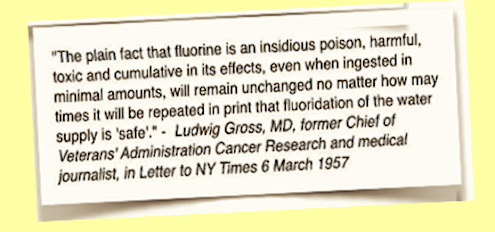You are here: Home1 / 12 Endocrine Disrupters
~ 12 Hormone-Altering Chemicals & How to Avoid Them ~

There is no end to the tricks that endocrine disruptors can play on our bodies: increasing production of certain hormones; decreasing production of others; imitating hormones; turning one hormone into another; interfering with hormone signalling; telling cells to die prematurely; competing with essential nutrients; binding to essential hormones accumulating in organs that produce hormones.

HERE ARE 12 OF THE WORST HORMONE DISRUPTERS AND HOW THEY DO THEIR DIRTY DEEDS:
.
BPA
Some may say that imitation is the sincerest form of flattery, but do you really want a chemical used in plastics imitating the sex hormone estrogen in your body? No! Unfortunately, this synthetic hormone can trick the body into thinking it’s the real thing – and the results aren’t pretty. BPA has been linked to everything from breast and others cancers to reproductive problems, obesity, early puberty and heart disease, and according to government tests, 93 percent of Americans have BPA in their bodies!
How to avoid it? Go fresh instead of canned – many food cans are lined with BPA – or research which companies don’t use BPA or similar chemicals in their products. Say no to receipts, since thermal paper is often coated with BPA. And avoid plastics marked with a “PC,” for polycarbonate, or recycling label #7. Not all of these plastics contain BPA, but many do – and it’s better safe than sorry when it comes to keeping synthetic hormones out of your body.
Dioxin
Dioxins are multi-taskers… but not in a good way! They form during many industrial processes when chlorine or bromine are burned in the presence of carbon and oxygen. Dioxins can disrupt the delicate ways that both male and female sex hormone signaling occurs in the body. This is a bad thing! Here’s why: Recent research has shown that exposure to low levels of dioxin in the womb and early in life can both permanently affect sperm quality and lower the sperm count in men during their prime reproductive years. But that’s not all! Dioxins are very long-lived, build up both in the body and in the food chain, are powerful carcinogens and can also affect the immune and reproductive systems.
How to avoid it? That’s pretty difficult, since the ongoing industrial release of dioxin has meant that the American food supply is widely contaminated. Products including meat, fish, milk, eggs and butter are most likely to be contaminated, but you can cut down on your exposure by eating fewer animal products.
What happens when you introduce highly toxic chemicals into nature and turn your back? For one thing, feminization of male frogs. That’s right, researchers have found that exposure to even low levels of the herbicide atrazine can turn male frogs into females that produce completely viable eggs. Atrazine is widely used on the majority of corn crops in the United States, and consequently it’s a pervasive drinking water contaminant. Atrazine has been linked to breast tumors, delayed puberty and prostate inflammation in animals, and some research has linked it to prostate cancer in people.
In studies of humans and animals, atrazine has been found to “harm the reproductive system and disrupt the nerve and hormone systems, affecting one’s brain, behavior and crucial hormones such as estrogen, testosterone and dopamine.” Even a recent study from the University of Texas found that maternal exposure to atrazine could lead to “modest but consistent” genital deformations in male children. MORE
How to avoid it? Buy organic produce and get a drinking water filter certified to remove atrazine.
Phthalates
Did you know that a specific signal programs cells in our bodies to die? It’s totally normal and healthy for 50 billion cells in your body to die every day! But studies have shown that chemicals called phthalates can trigger what’s known as “death-inducing signaling” in testicular cells, making them die earlier than they should. Yep, that’s cell death – in your man parts. If that’s not enough, studies have linked phthalates to hormone changes, lower sperm count, less mobile sperm, birth defects in the male reproductive system, obesity, diabetes and thyroid irregularities.
How to avoid it? A good place to start is to avoid plastic food containers, children’s toys (some phthalates are already banned in kid’s products), and plastic wrap made from PVC, which has the recycling label #3. Some personal care products also contain phthalates, so read the labels and avoid products that simply list added “fragrance,” since this catch-all term sometimes means hidden phthalates.
Who needs food tainted with rocket fuel?! That’s right, perchlorate, a component in rocket fuel, contaminates much of our produce and milk, according to EWG and government test data. When perchlorate gets into your body it competes with the nutrient iodine, which the thyroid gland needs to make thyroid hormones. Basically, this means that if you ingest too much of it you can end up altering your thyroid hormone balance. This is important because it’s these hormones that regulate metabolism in adults and are critical for proper brain and organ development in infants and young children.
How to avoid it? You can reduce perchlorate in your drinking water by installing a reverse osmosis filter. As for food, it’s pretty much impossible to avoid perchlorate, but you can reduce its potential effects on you by making sure you are getting enough iodine in your diet. Eating iodized salt is one good way.
Fire retardants
What do breast milk and polar bears have in common? In 1999, some Swedish scientists studying women’s breast milk discovered something totally unexpected: The milk contained an endocrine-disrupting chemical found in fire retardants, and the levels had been doubling every five years since 1972! These incredibly persistent chemicals, known as polybrominated diphenyl ethers or PBDEs, have since been found to contaminate the bodies of people and wildlife around the globe – even polar bears. These chemicals can imitate thyroid hormones in our bodies and disrupt their activity. That can lead to lower IQ, among other significant health effects. While several kinds of PBDEs have now been phased out, this doesn’t mean that toxic fire retardants have gone away. PBDEs are incredibly persistent, so they’re going to be contaminating people and wildlife for decades to come.
How to avoid it? It’s virtually impossible, but passing better toxic chemical laws that require chemicals to be tested before they go on the market would help reduce our exposure. A few things that can you can do in the meantime include: use a vacuum cleaner with a HEPA filter, which can cut down on toxic-laden house dust; avoid reupholstering foam furniture; take care when replacing old carpet (the padding underneath may contain PBDEs).
Lead
You may or may not like heavy metal music, but lead is one heavy metal you want to avoid. It’s well known that lead is toxic, especially to children. Lead harms almost every organ system in the body and has been linked to a staggering array of health effects, including permanent brain damage, lowered IQ, hearing loss, miscarriage, premature birth, increased blood pressure, kidney damage and nervous system problems. But few people realize that one other way that lead may affect your body is by disrupting your hormones. In animals, lead has been found to lower sex hormone levels. Research has also shown that lead can disrupt the hormone signaling that regulates the body’s major stress system (called the HPA axis). You probably have more stress in your life than you want, so the last thing you need is something making it harder for your body to deal with it – especially when this stress system is implicated in high blood pressure, diabetes, anxiety and depression.
Lead ingestion is also linked to violent crime. One study found that for every five micrograms per deciliter (μg/dl) increase in blood lead levels at age six, the risk of being arrested for a violent crime as a young adult increased by almost 50%. The risk has been confirmed by other research. Childhood exposure increases the likelihood of impulsivity, aggression, and low IQ. All are associated with criminal behavior.
How to avoid it? Keep your home clean and well maintained. Crumbling old paint is a major source of lead exposure, so get rid of it carefully. A good water filter can also reduce your exposure to lead in drinking water. And if you need another reason to eat better, studies have also shown that children with healthy diets absorb less lead.
Arsenic
Arsenic isn’t just for murder mysteries anymore. In fact, this toxin is lurking in your food and drinking water. If you eat enough of it, arsenic will kill you outright. In smaller amounts, arsenic can cause skin, bladder and lung cancer. Basically, bad news. Less well known: Arsenic messes with your hormones! Specifically, it can interfere with normal hormone functioning in the glucocorticoid system that regulates how our bodies process sugars and carbohydrates. What does that mean for you? Well, disrupting the glucocorticoid system has been linked to weight gain/loss, protein wasting, immunosuppression, insulin resistance (which can lead to diabetes), osteoporosis, growth retardation and high blood pressure.
Mercury
Caution: That sushi you are eating could be hazardous to your health. Mercury, a naturally occurring but toxic metal, gets into the air and the oceans primarily though burning coal. Eventually, it can end up on your plate in the form of mercury-contaminated seafood. Pregnant women are the most at risk from the toxic effects of mercury, since the metal is known to concentrate in the fetal brain and can interfere with brain development. Mercury is also known to bind directly to one particular hormone that regulates women’s menstrual cycle and ovulation, interfering with normal signaling pathways. In other words, hormones don’t work so well when they’ve got mercury stuck to them! The metal may also play a role in diabetes, since mercury has been shown to damage cells in the pancreas that produce insulin, which is critical for the body’s ability to metabolize sugar.
How to avoid it? For people who still want to eat (sustainable) seafood with lots of healthy fats but without a side of toxic mercury, wild salmon and farmed trout are good choices.
Perfluorinated chemicals (PFCs) – [Please note the ‘F’ in PFCs is for fluoride]
The perfluorinated chemicals used to make non-stick cookware can stick to you. Perfluorochemicals are so widespread and extraordinarily persistent that 99 percent of Americans have these chemicals in their bodies. One particularly notorious compound called PFOA has been shown to be “completely resistant to biodegradation.” In other words, PFOA doesn’t break down in the environment – ever. That means that even though the chemical was banned after decades of use, it will be showing up in people’s bodies for countless generations to come. This is worrisome, since PFOA exposure has been linked to decreased sperm quality, low birth weight, kidney disease, thyroid disease and high cholesterol, among other health issues. Scientists are still figuring out how PFOA affects the human body, but animal studies have found that it can affect thyroid and sex hormone levels.
How to avoid it? Skip non-stick pans as well as stain and water-resistant coatings on clothing, furniture and carpets.
Organophosphate pesticides:
Neurotoxic organophosphate compounds that the Nazis produced in huge quantities for chemical warfare during World War II were luckily never used. After the war ended, American scientists used the same chemistry to develop a long line of pesticides that target the nervous systems of insects. Despite many studies linking organophosphate exposure to effects on brain development, behavior and fertility, they are still among the more common pesticides in use today. A few of the many ways that organophosphates can affect the human body include interfering with the way testosterone communicates with cells, lowering testosterone and altering thyroid hormone levels.
How to avoid it? Buy organic produce and use EWG’s Shopper’s Guide to Pesticides in Produce, which can help you find the fruits and vegetables that have the fewest pesticide residues. Glycol Ethers
Shrunken testicles:
Do we have your full attention now? This is one thing that can happen to rats exposed to chemicals called glycol ethers, which are common solvents in paints, cleaning products, brake fluid and cosmetics. Worried? You should be. The European Union says that some of these chemicals “may damage fertility or the unborn child.” Studies of painters have linked exposure to certain glycol ethers to blood abnormalities and lower sperm counts. And children who were exposed to glycol ethers from paint in their bedrooms had substantially more asthma and allergies.


THE TORAH
“… it will be shown that water fluoridation & vaccinations violate the Torah principles of kashrut, pekuach nefesh, and ush.
Scroll to top





